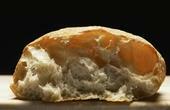Carbohydrates( II)

Carbohydrates enter the human body in the form of complex polysaccharides, such as starch, disaccharides and monosaccharides. Most carbohydrates come in the form of starch. After cleavage to glucose, carbohydrates are absorbed and then, after entering into some intermediate reactions, break down into water and carbon dioxide. All these processes that take place with carbohydrates, followed by the final oxidation, are accompanied by the release of energy, which is then used by the body.
Complex carbohydrates, such as starch and malt sugar, begin to split already in the oral cavity, where under the influence of amylase and maltase, the starch is broken down to glucose. Getting into the small intestine, all carbohydrates are split into monosaccharides. Carbohydrates are absorbed in part in the form of monosaccharides( galactose, fructose), but mainly absorption occurs in the form of glucose, and begins already in the upper intestine. In the lower parts of the small intestine in food gruel carbohydrates is almost not contained. Carbohydrates are absorbed into the blood through the villi of the mucous membrane, to which the capillaries approach, and then enter the portal vein along with the blood flowing from the small intestine and pass through the liver. In the general bloodstream, carbohydrates are only passed by the liver if the sugar concentration in the human blood is 0.1%.
In the blood, the sugar concentration is constantly maintained at a certain level. The sugar content in the plasma is on average 0.1%.The main role in maintaining a constant level of sugar in the blood is played by the liver. In the case of abundant sugar intake in the body, its excess is deposited in the liver and enters the bloodstream only when its content in the blood drops. Carbohydrates in the liver are contained in the form of glycogen.
The presence of starch in food does not significantly change the blood sugar level. This is due to the fairly long time of starch splitting in the digestive tract, and the monosaccharides formed during this process are absorbed slowly. If a significant amount( 150-200 g) of regular sugar or glucose is received, then the blood sugar level rises sharply. This condition is called food or alimentary hyperglycaemia. Excess of sugar from the body is excreted by the kidneys, and glucose appears in the urine.
Kidneys begin to remove sugar from the body if its level in the blood begins to be 0.15-0.18%.Such alimentary hyperglycemia occurs in most cases after eating a large amount of sugar and soon passes without causing any disturbances in the body's activity.
The disease, known as diabetes, is caused by a violation of the intrasecretory activity of the pancreas. This disease leads to an increase in blood sugar, a loss of the liver's ability to noticeably retain sugar, and increased release of sugar in the urine. .. more
Used Materials:
Shilov VN, Mitsyo VP"Healthy Nutrition"
